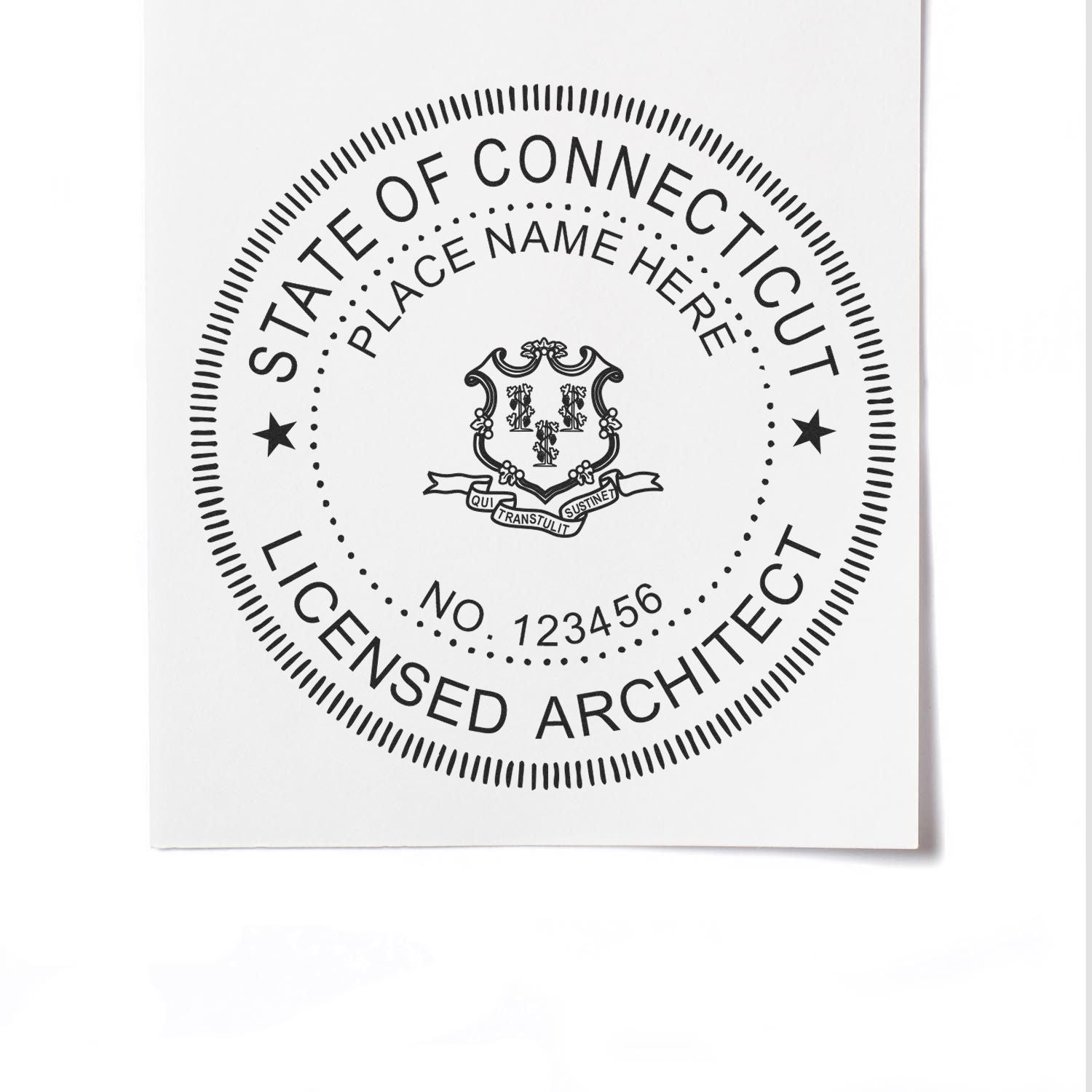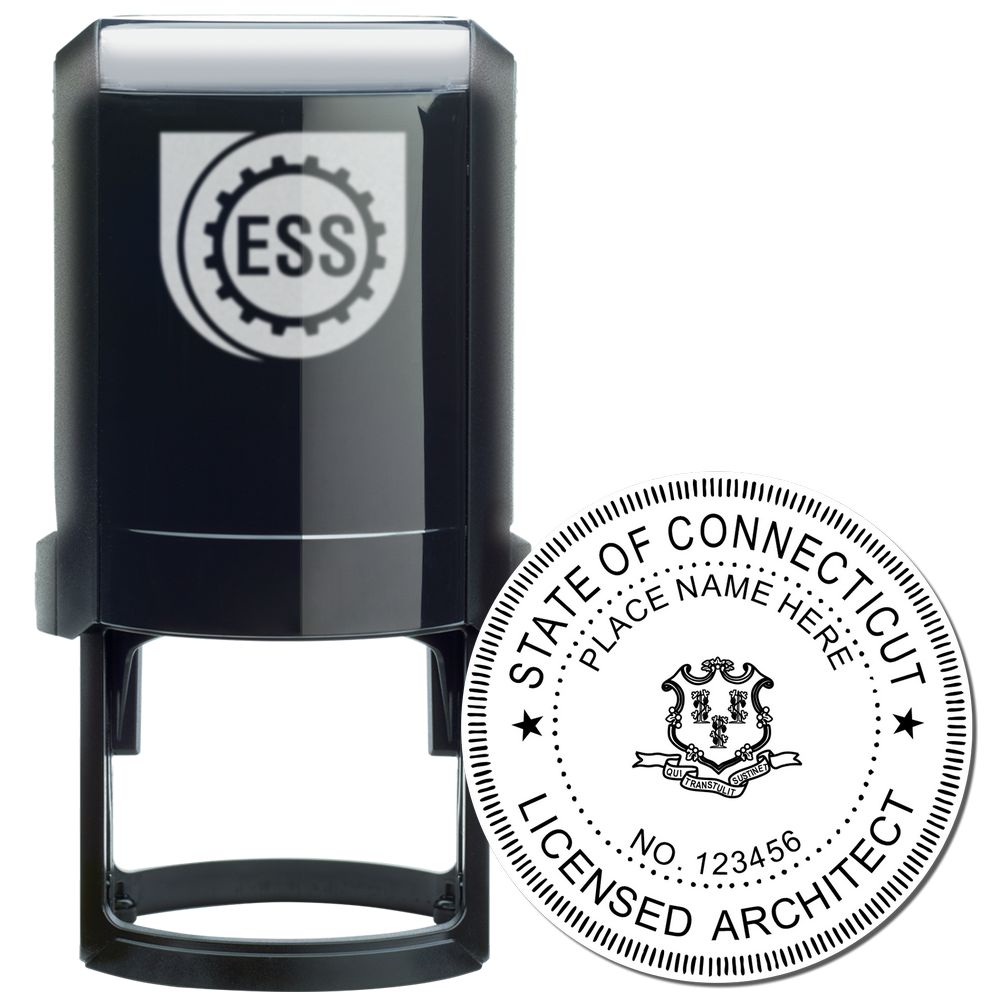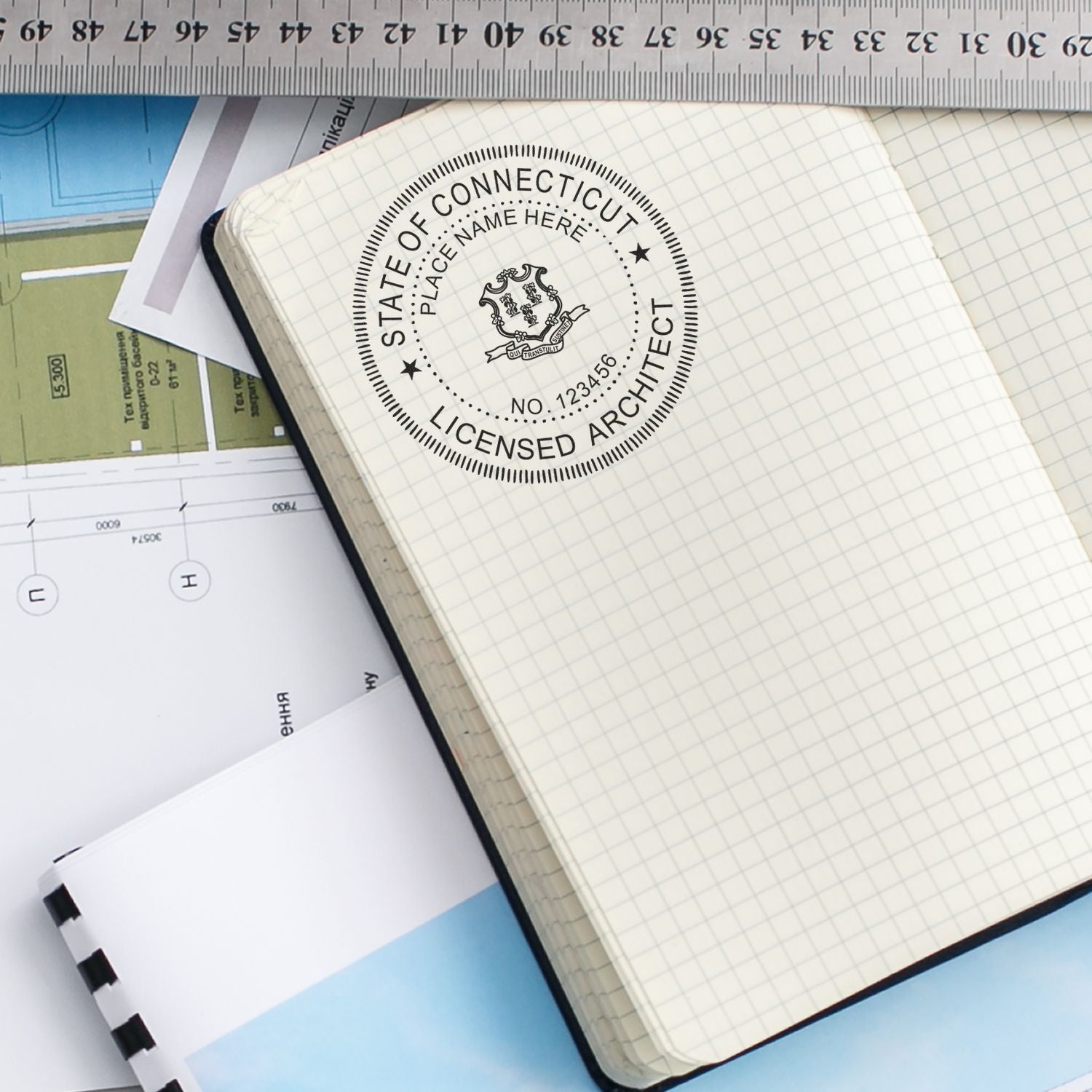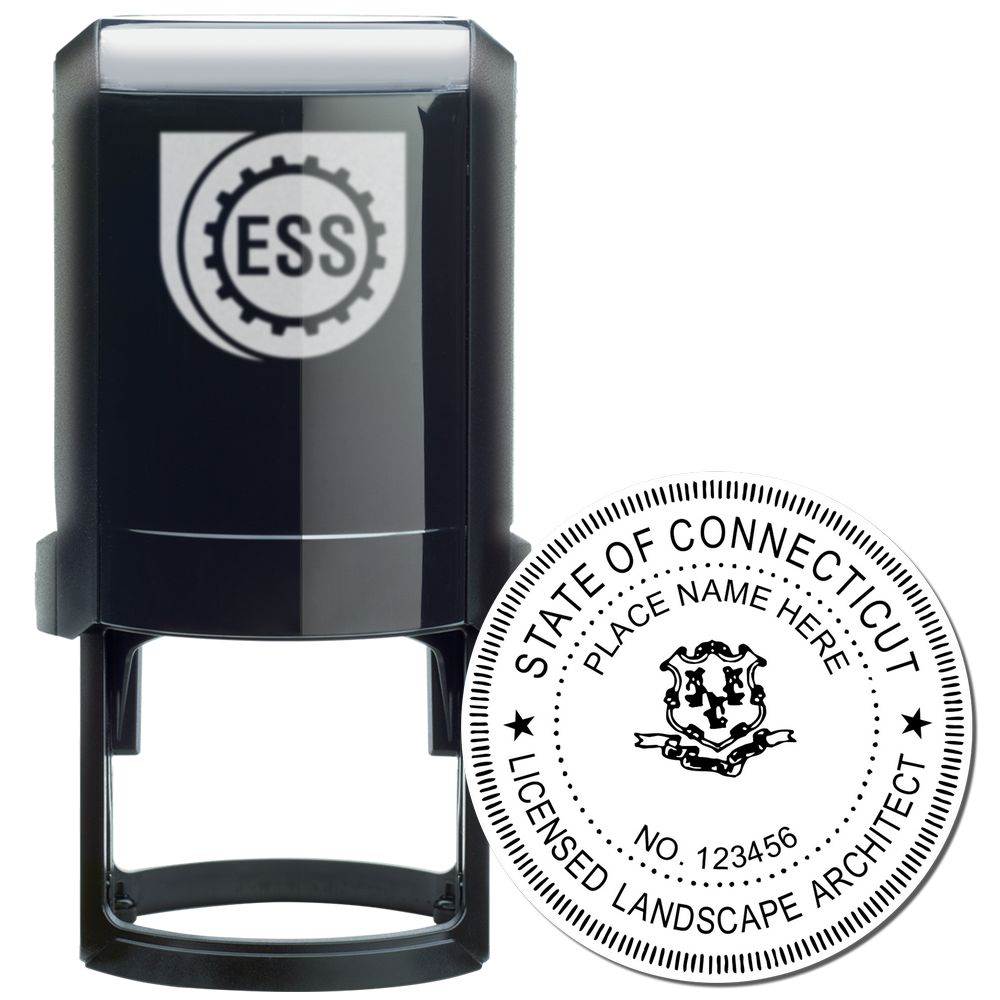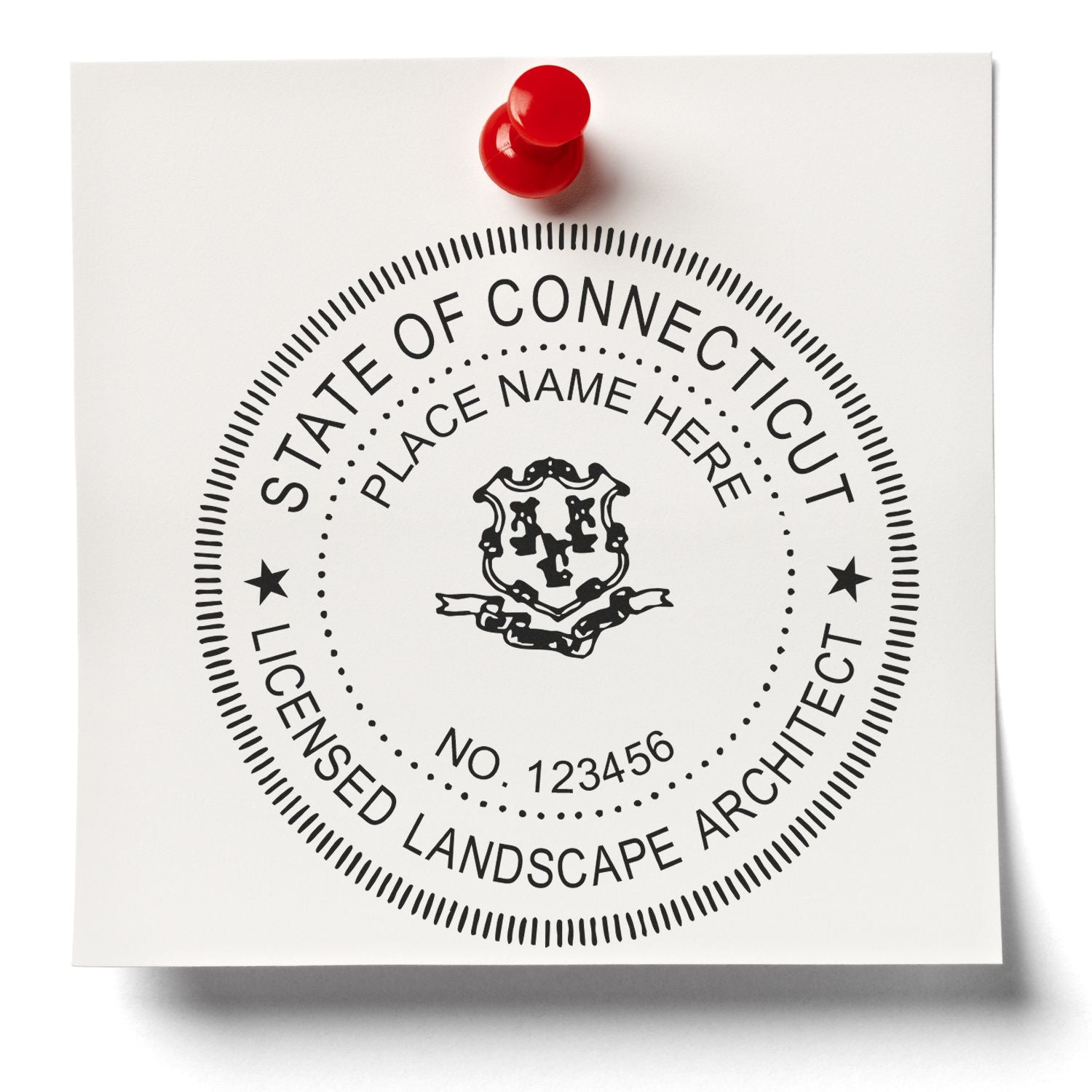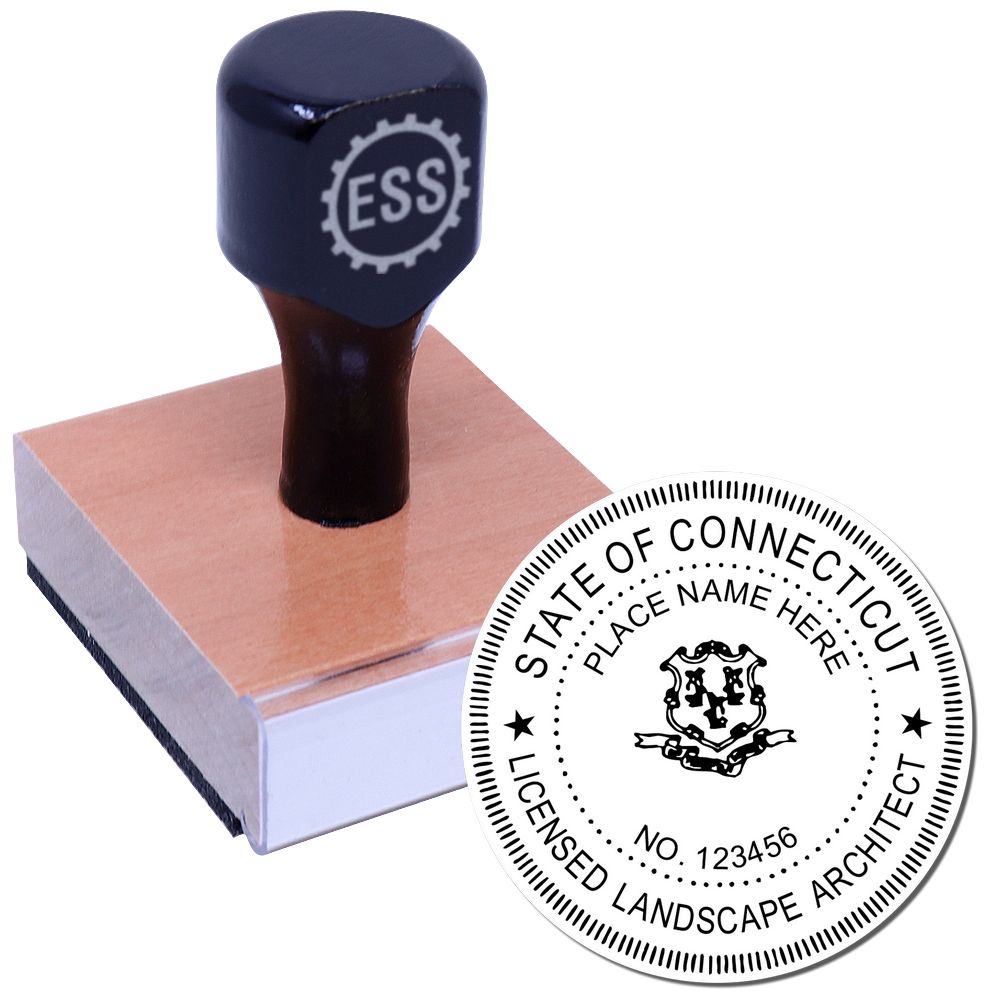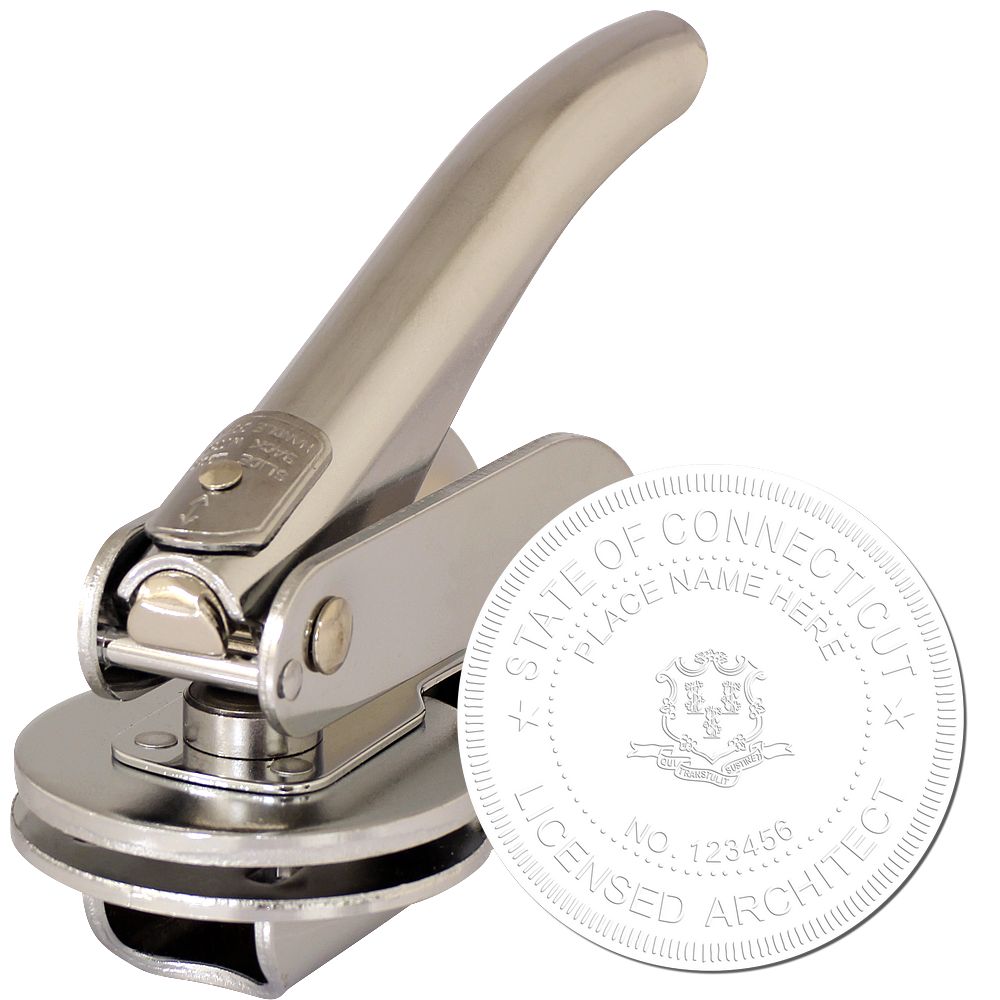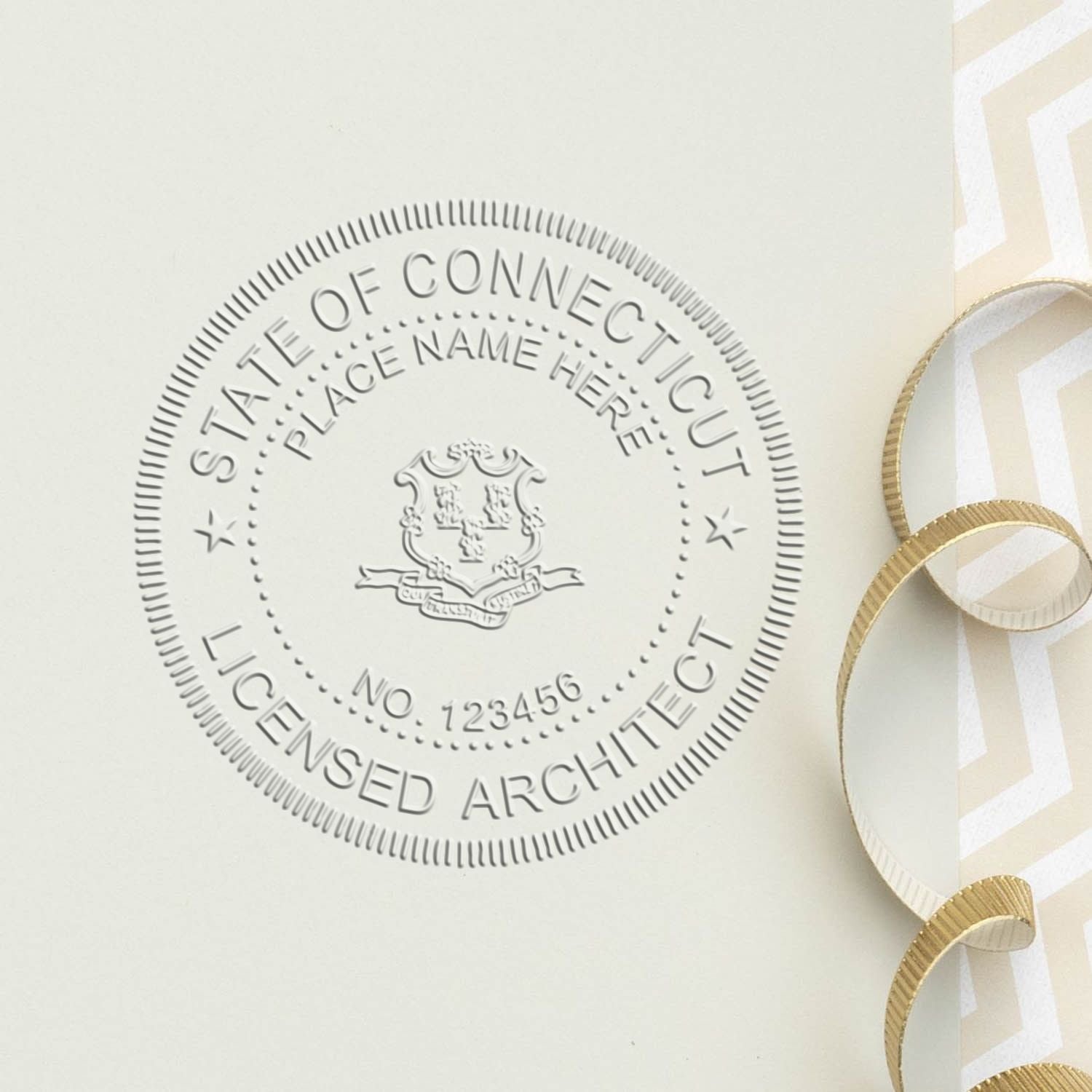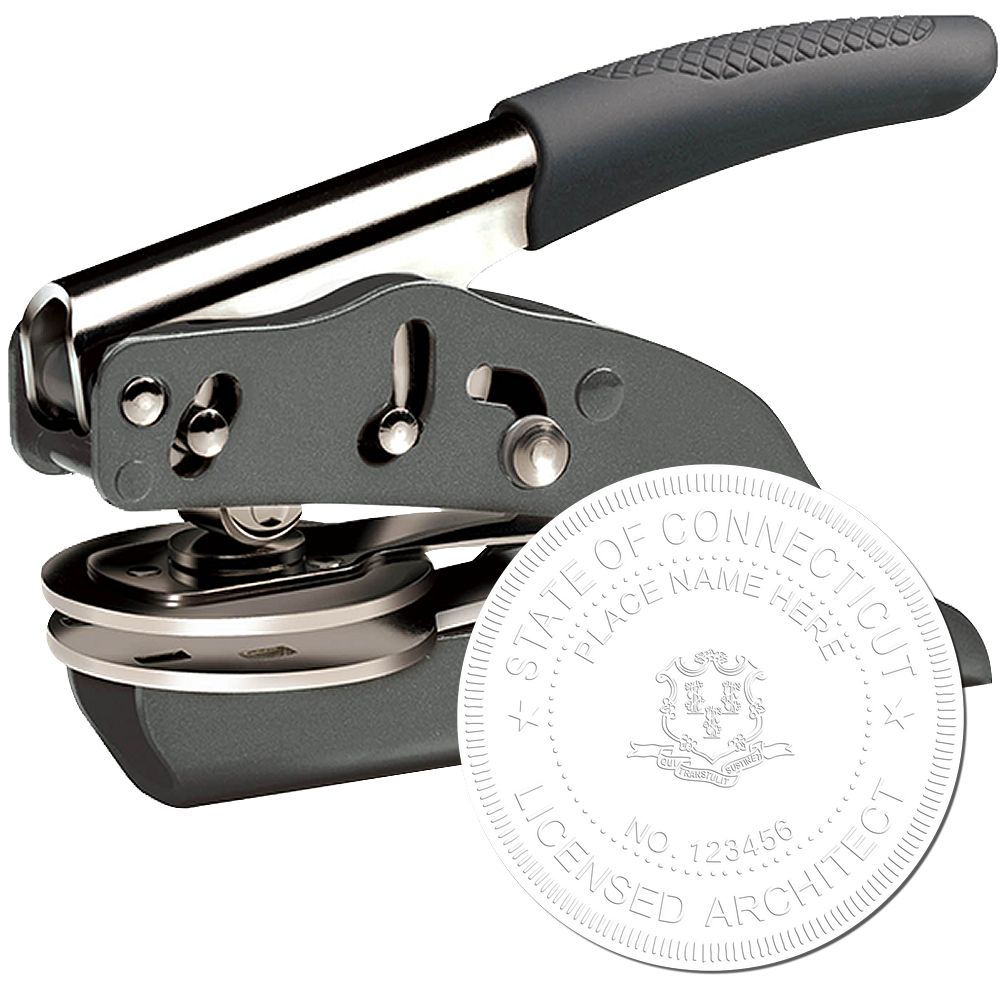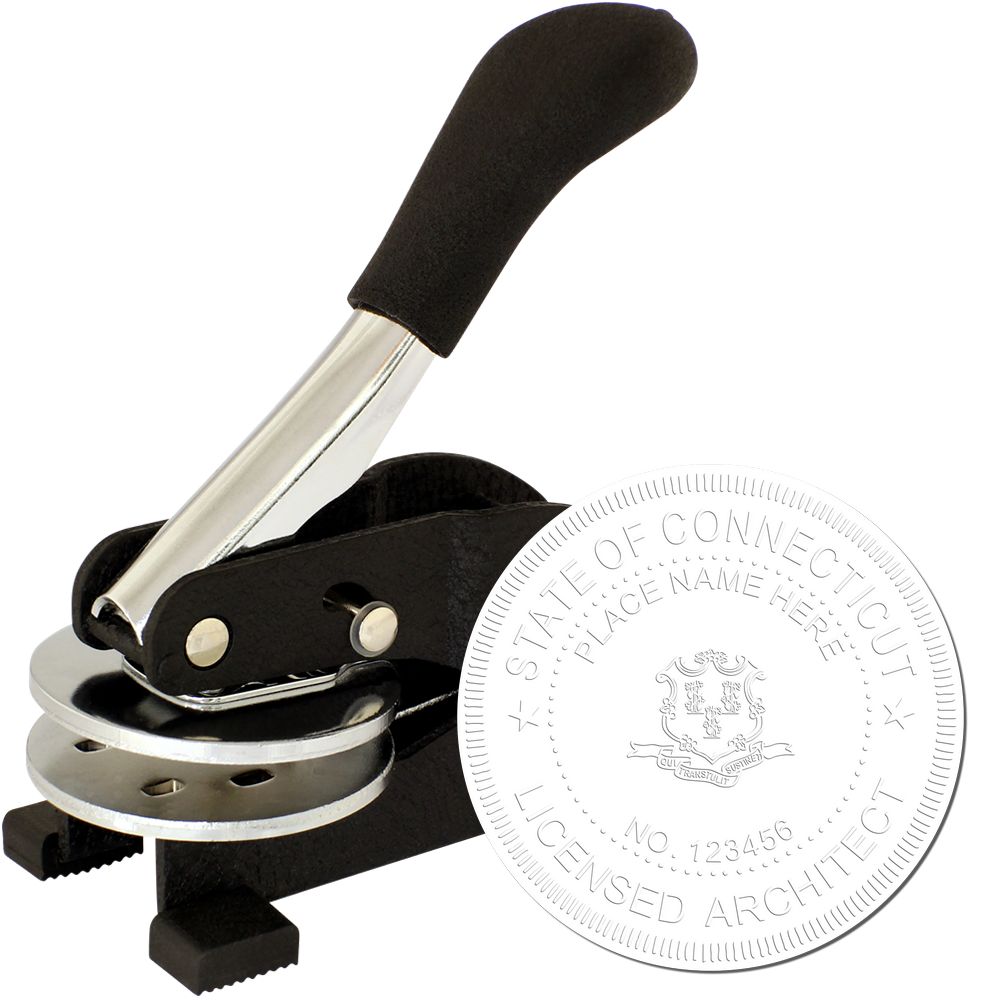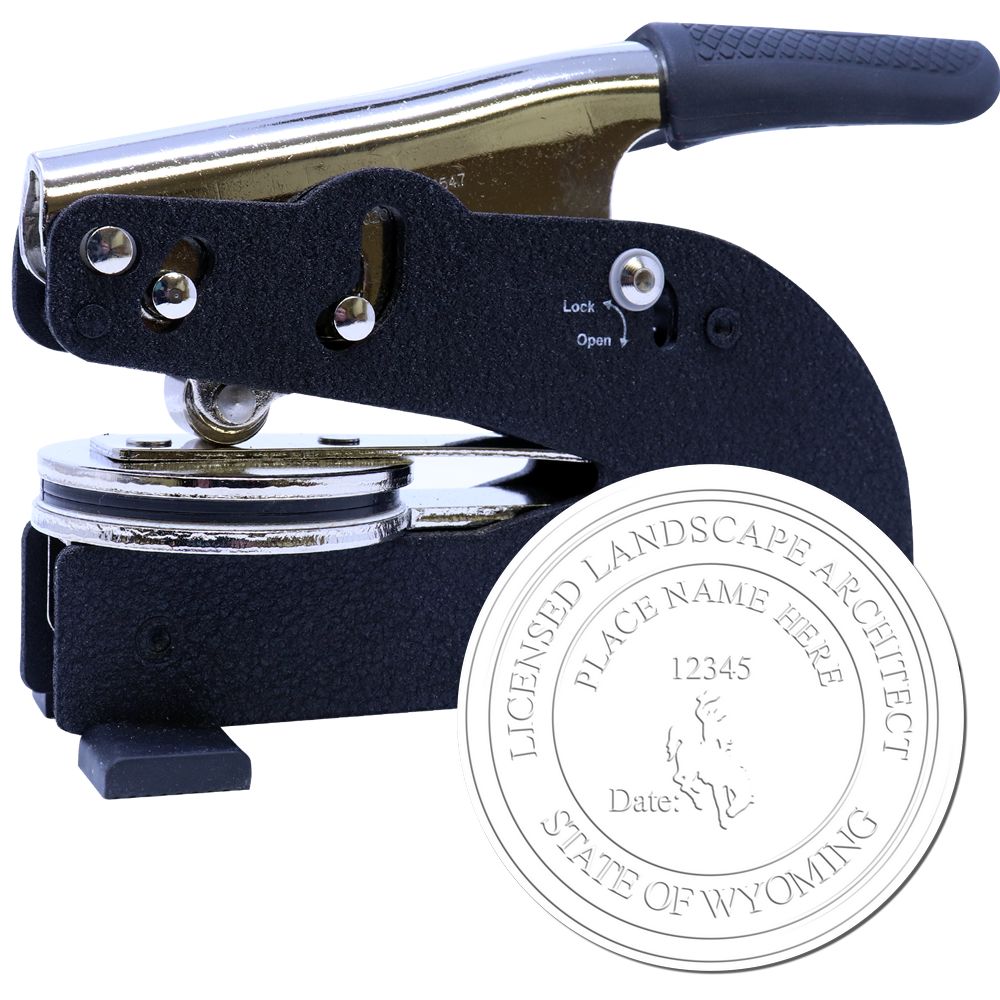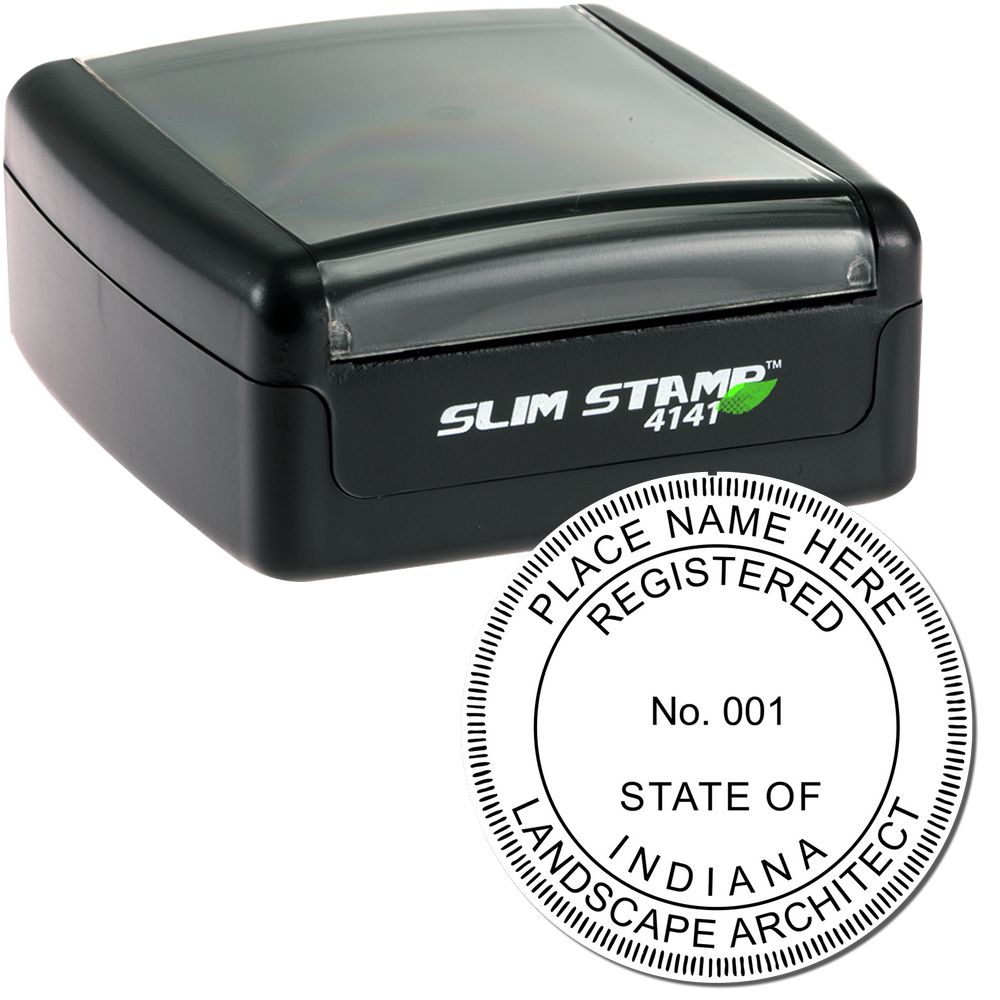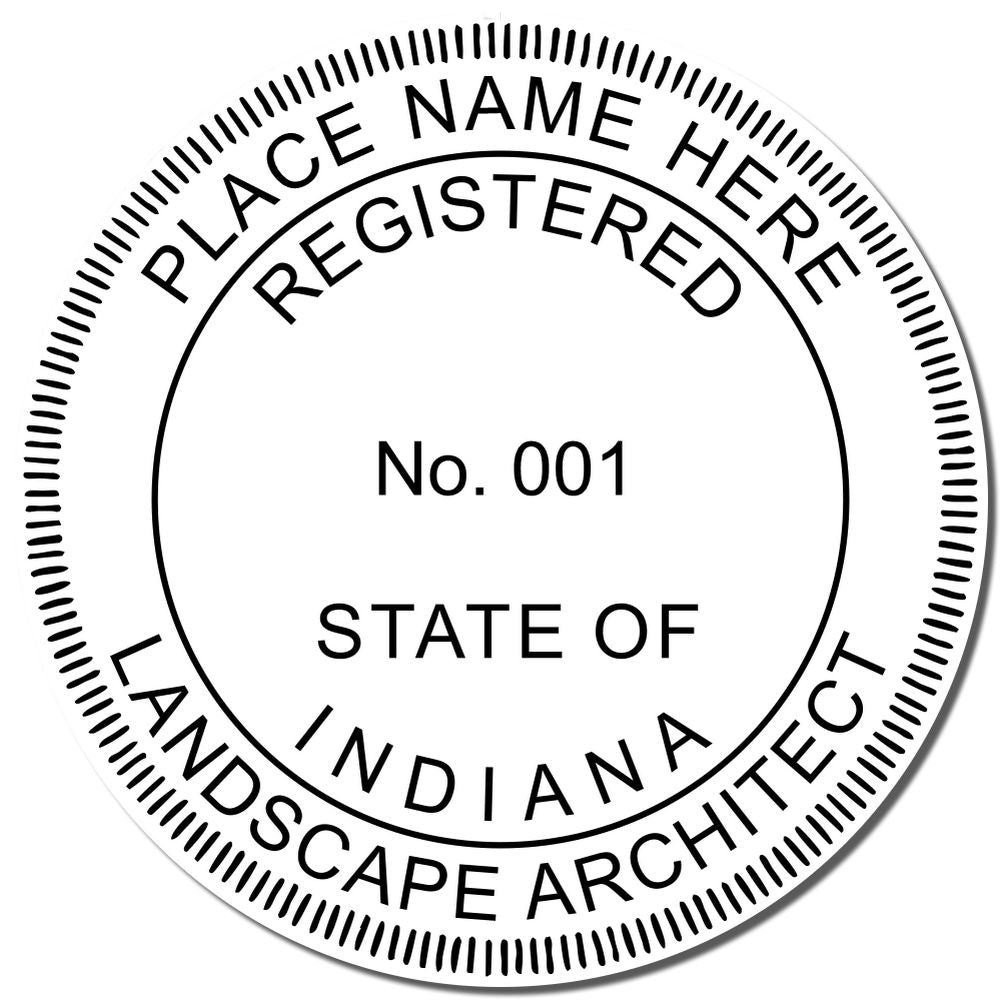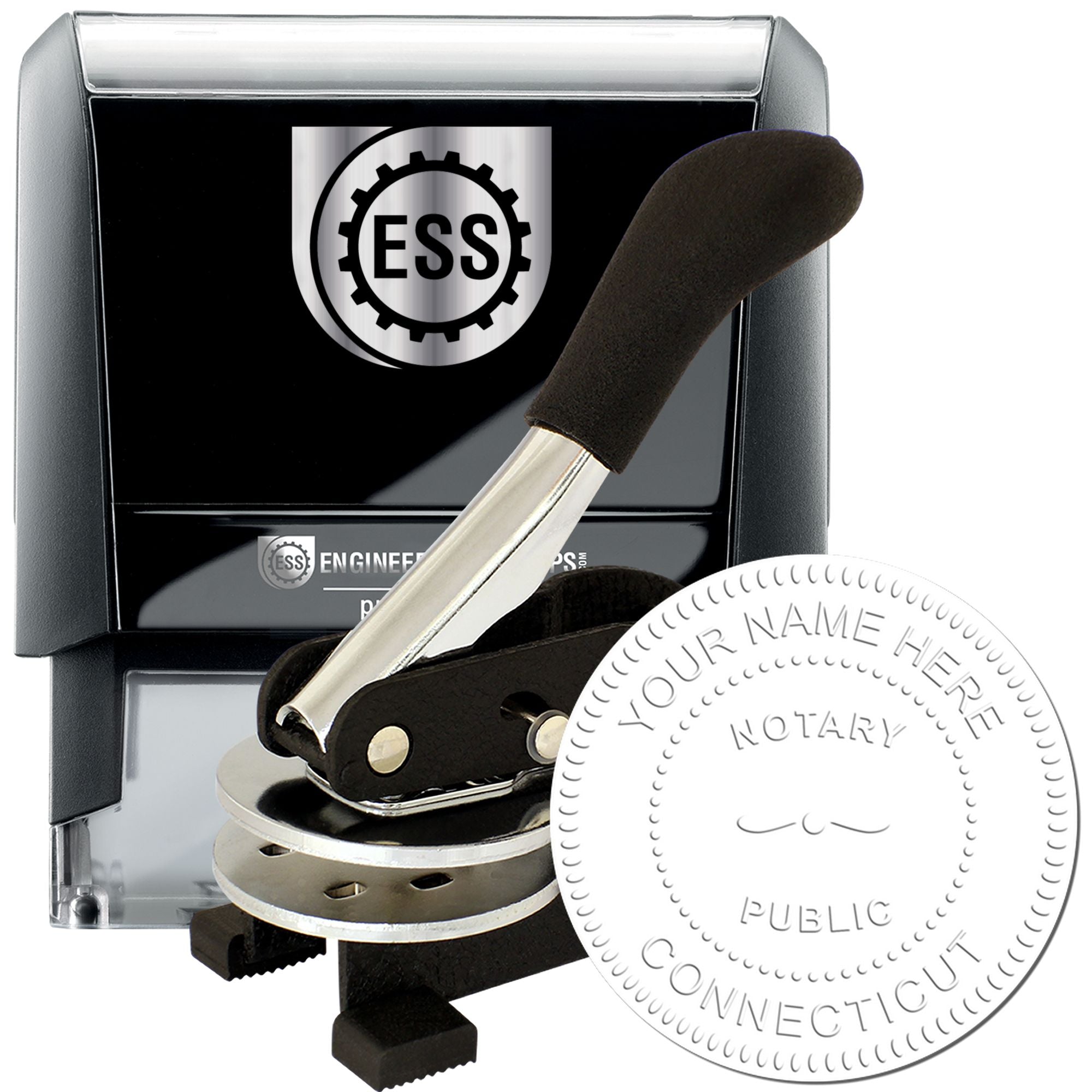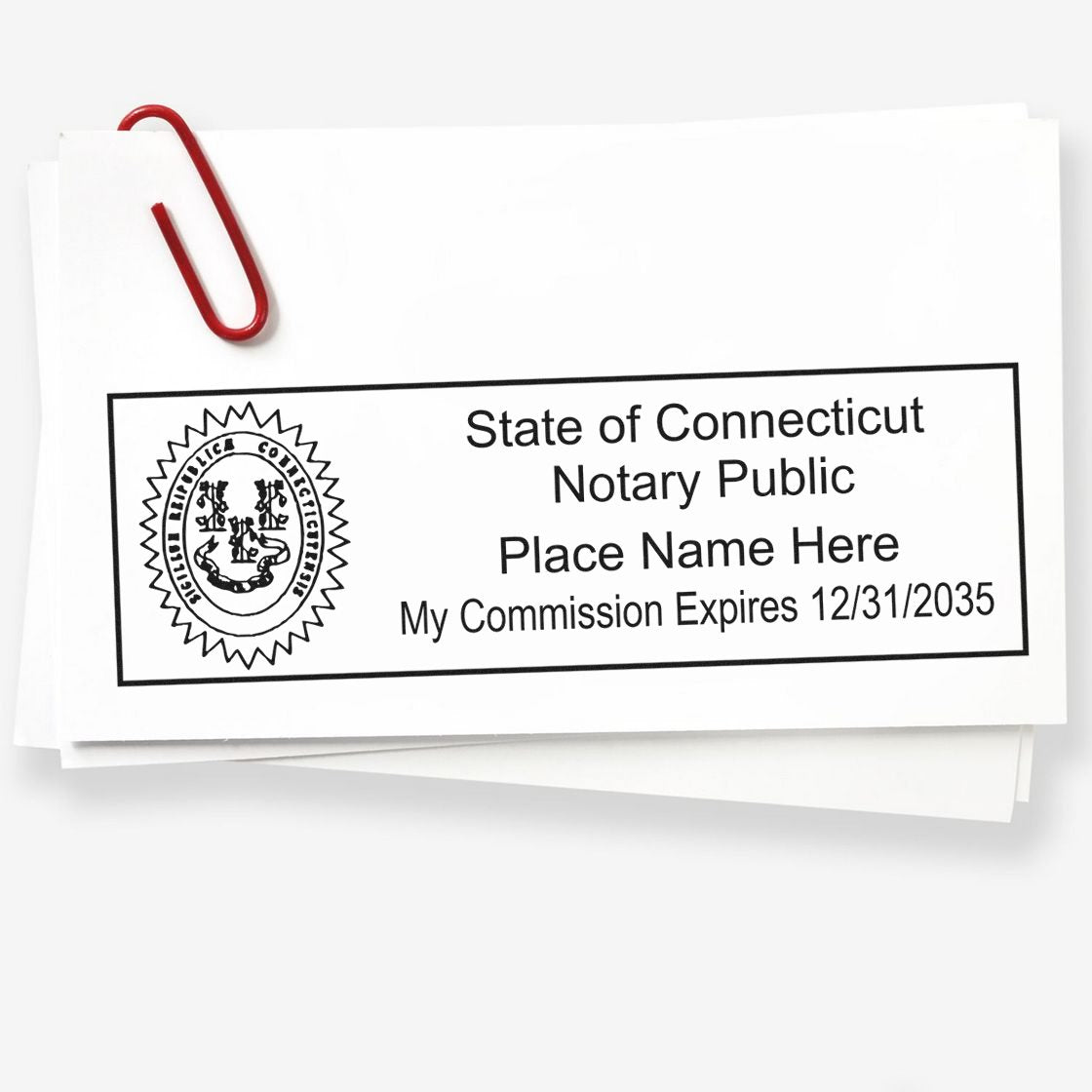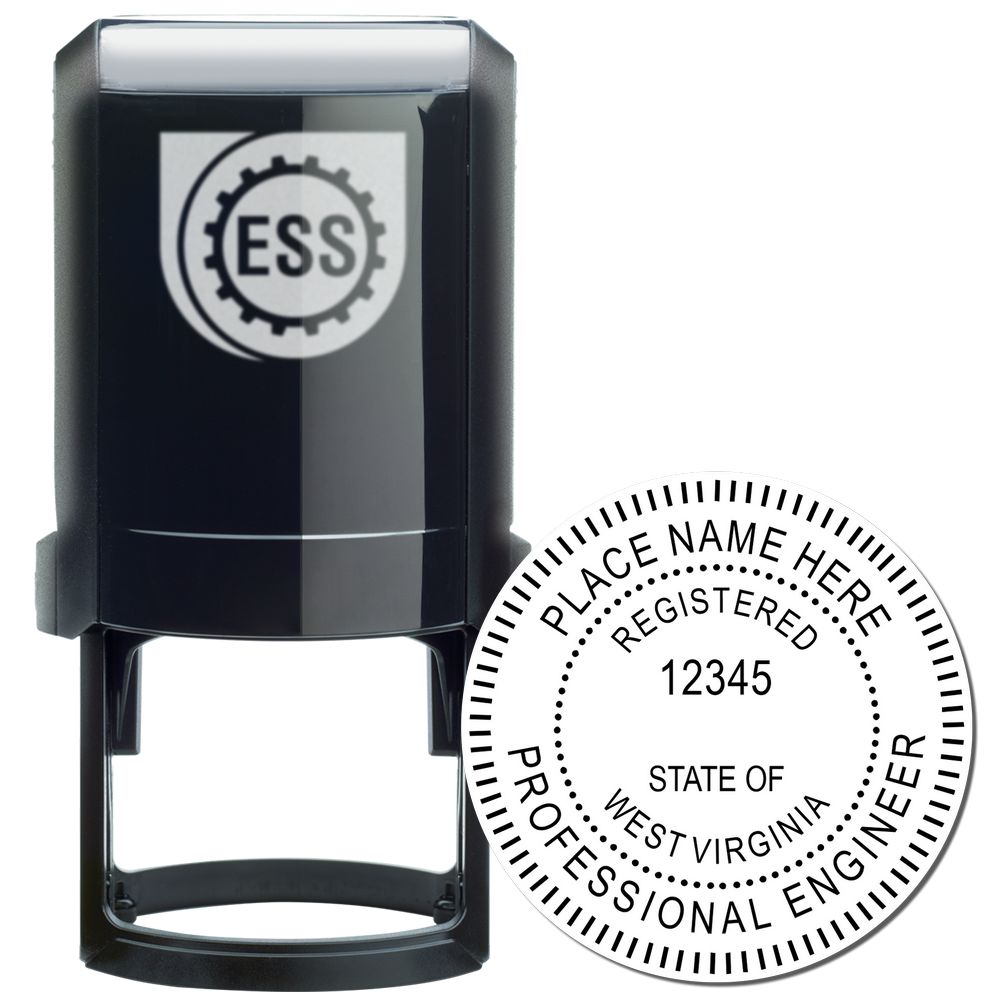The Importance of Architect Seals in Connecticut
Architect seals play a vital role in the field of architecture, serving as a symbol of legitimacy and professionalism. In the state of Connecticut, architect seals carry significant weight, as they represent the official approval and authentication of architectural documents. Understanding the role and legal requirements associated with architect seals is essential for architects practicing in Connecticut.
Understanding the Role of Architect Seals
Architect seals, also known as architect stamps, are embossed impressions or inked imprints that feature the unique identifier of a licensed architect. These seals are affixed to architectural drawings, plans, and specifications to signify the involvement and oversight of a licensed architect. The seal serves as a visual indication that the documents have been reviewed and approved by a professional who is qualified to practice architecture in the state.
In Connecticut, architect seals are required for various architectural documents, including construction plans, building designs, and specifications. The presence of an architect seal provides assurance to clients, building officials, and the general public that the architectural work has been performed by a licensed professional and meets the necessary standards and regulations.
Legal Requirements for Architect Seals in Connecticut
Connecticut has specific legal requirements regarding architect seals. According to state regulations, only licensed architects who are registered with the Connecticut Department of Consumer Protection (DCP) are authorized to use architect seals. The seal must include the architect's full name, license number, and the words "Registered Architect" or "Architect."
Architect seals in Connecticut must conform to certain specifications, including the size and format of the seal impression. The state provides guidelines for the design and dimensions of the seal, ensuring consistency and authenticity across architectural documents. Architects must adhere to these requirements to maintain compliance with the law.
To learn more about the specific requirements for architect seals in Connecticut, including design specifications and usage guidelines, architects can refer to our article on Connecticut architect seal requirements.
By understanding the role and legal requirements of architect seals in Connecticut, architects can ensure that their architectural work is recognized and respected. Architect seals not only establish the credibility of architects but also instill confidence in clients and regulatory authorities. Maintaining compliance with the state's regulations is essential to uphold professional standards and protect the integrity of the architectural profession in Connecticut.
Securing Your Architectural Legitimacy
To establish your architectural legitimacy in Connecticut, it is crucial to understand the purpose of architect seals and the benefits of using them.
The Purpose of Architect Seals in Connecticut
Architect seals play a vital role in Connecticut's architectural industry. These seals, also known as architect stamps, serve as a professional endorsement of architectural documents, plans, and drawings. By affixing an architect seal to these documents, architects certify that the designs comply with all relevant regulations, codes, and professional standards.
In Connecticut, architect seals are a legal requirement for certain architectural documents, such as building plans and specifications. These seals provide assurance to clients, building officials, and other stakeholders that the architectural work has been completed by a licensed and qualified architect.
To better understand the specific legal requirements for architect seals in Connecticut, refer to our article on connecticut architect seal requirements.
Benefits of Using an Architect Seal
Using an architect seal offers numerous benefits for architects practicing in Connecticut. Some of the key advantages include:
-
Legal Compliance: By affixing an architect seal to architectural documents, architects fulfill their legal obligations and ensure compliance with Connecticut's regulations. This helps to avoid potential legal issues and setbacks during the construction process.
Save 20%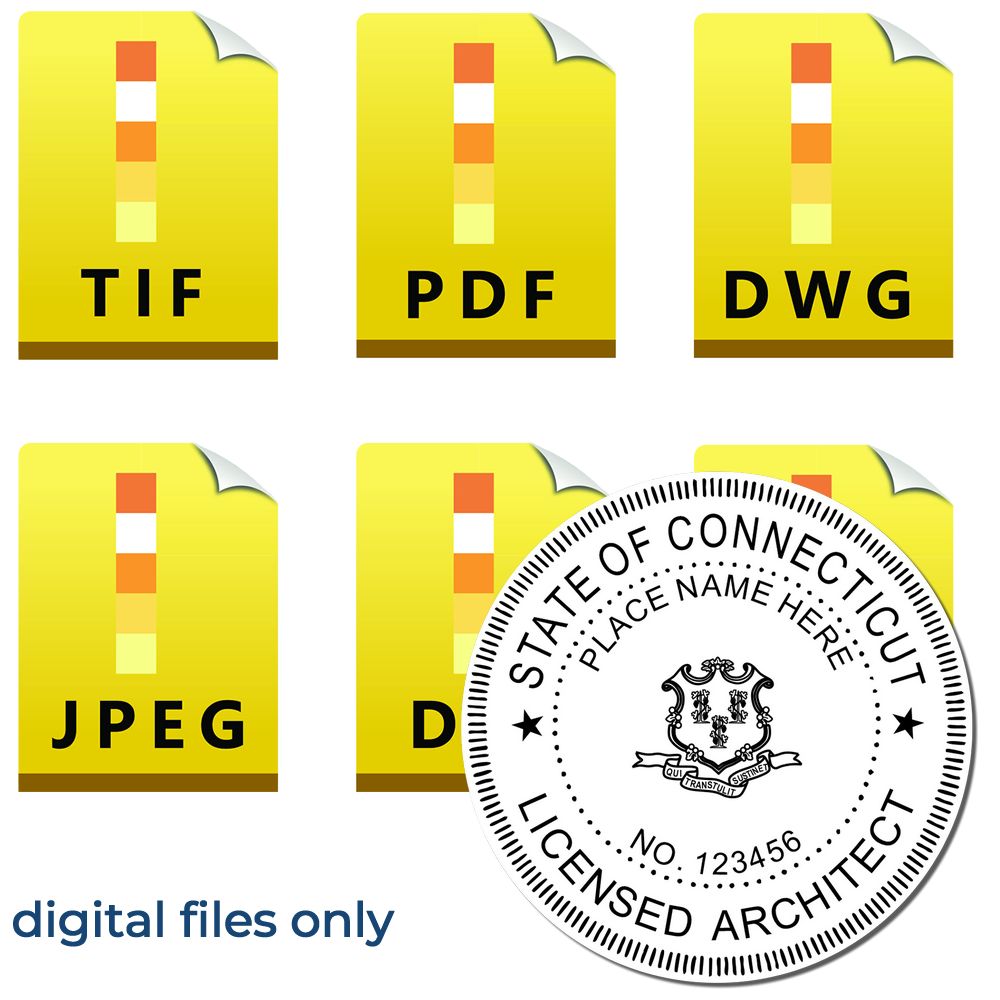
 Digital Connecticut Architect Stamp, Electronic Seal for Connecticut Architect3008ARC-CTSale price$20.00 Regular price$25.00Save 15%
Digital Connecticut Architect Stamp, Electronic Seal for Connecticut Architect3008ARC-CTSale price$20.00 Regular price$25.00Save 15%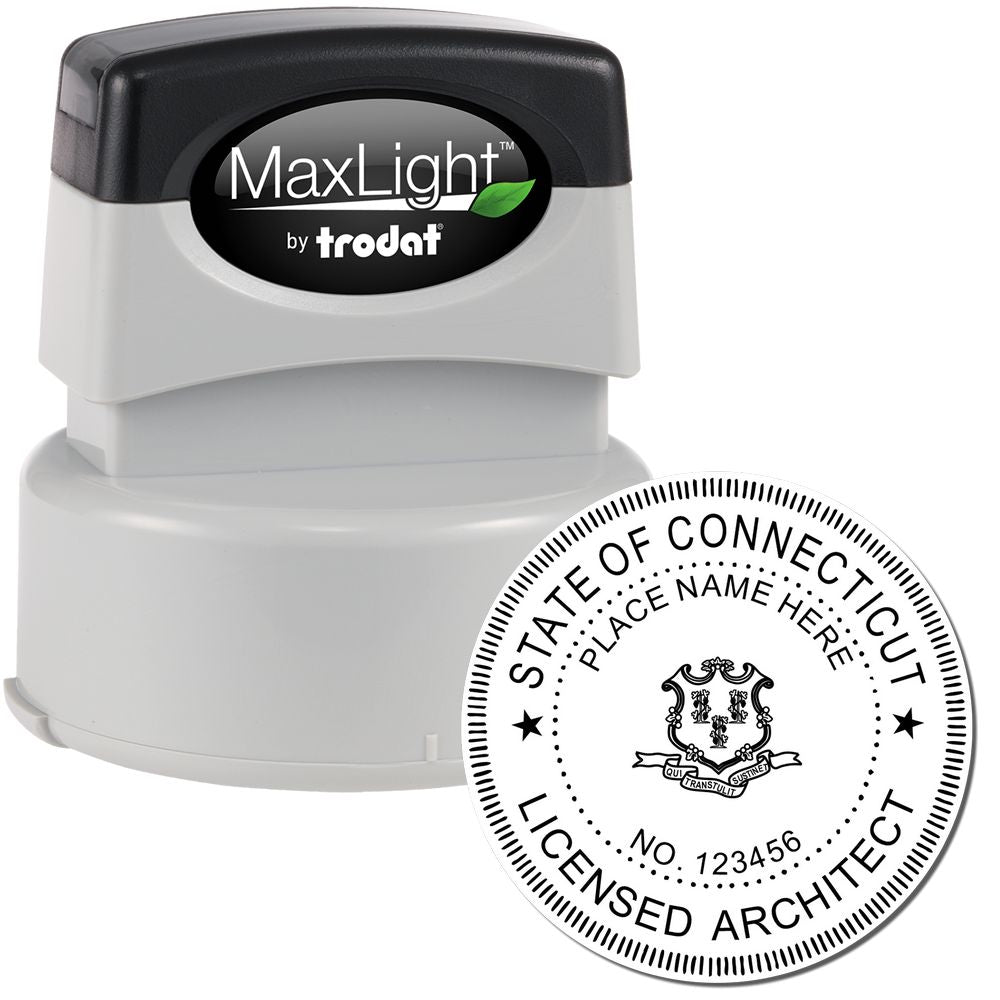
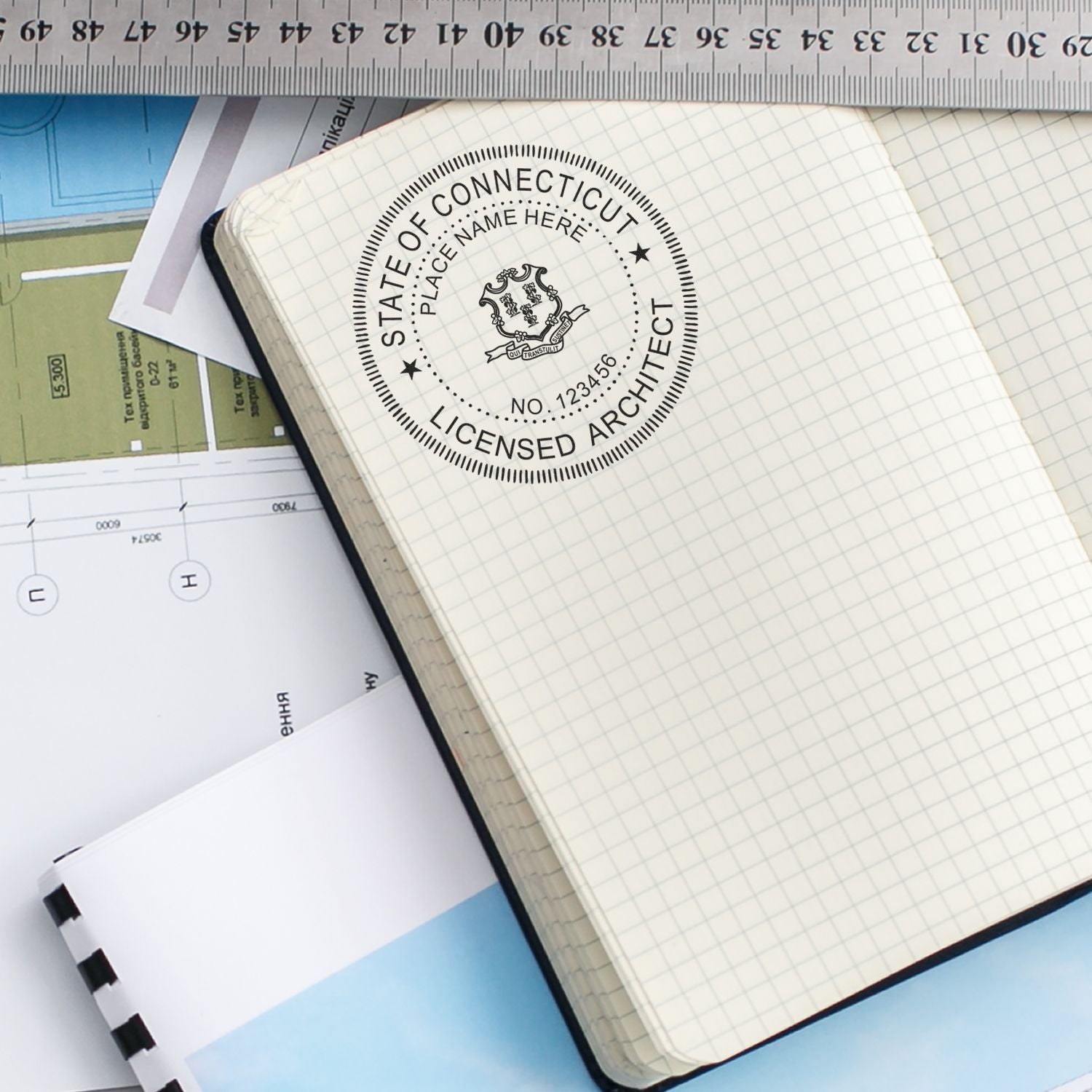 Premium MaxLight Pre-Inked Connecticut Architectural Stamp3021ARC-CTSale price$46.95 Regular price$55.00
Premium MaxLight Pre-Inked Connecticut Architectural Stamp3021ARC-CTSale price$46.95 Regular price$55.00 -
Professional Credibility: Architect seals enhance the professional credibility of architects. They serve as a mark of expertise, demonstrating that architects have met the necessary educational and licensing requirements to practice in Connecticut. This credibility can inspire confidence in clients and stakeholders.
-
Accountability and Liability: Architect seals hold architects accountable for their work and provide a level of liability protection. By taking responsibility for the accuracy and compliance of the architectural documents, architects demonstrate their commitment to producing high-quality designs.
-
Recognition and Recognition: Architect seals contribute to professional recognition and recognition within the architectural community. They signify an architect's commitment to upholding professional standards and ethical conduct. This recognition can open doors to new opportunities and collaborations.
To obtain an architect seal and fully enjoy these benefits, architects must follow the necessary steps and complete the required documentation. For detailed information on the process, refer to our article on connecticut architect stamps.
By understanding the purpose of architect seals and harnessing their benefits, architects can secure their architectural legitimacy in Connecticut. These seals not only ensure legal compliance but also enhance professional credibility and accountability within the architectural industry.
How to Obtain an Architect Seal in Connecticut
If you are an architect practicing in Connecticut, obtaining an architect seal is an essential step to ensure your professional legitimacy. An architect seal serves as a symbol of your expertise and authorization to practice architecture in the state. Let's explore the necessary steps and documentation required to obtain an architect seal in Connecticut.
Steps to Obtain an Architect Seal
To obtain an architect seal in Connecticut, architects must follow these steps:
-
Education and Experience: Complete the necessary educational requirements and gain relevant experience in the field of architecture. This typically involves obtaining a professional degree in architecture from an accredited institution and fulfilling the required internship hours.
-
Architect Registration Examination (ARE): Successfully pass the Architect Registration Examination, which tests candidates on their knowledge and competency in various areas of architecture. The ARE is a comprehensive examination administered by the National Council of Architectural Registration Boards (NCARB).
-
Membership with the Connecticut Chapter of the American Institute of Architects (AIA): Join the Connecticut Chapter of the AIA, a professional organization that provides resources and support to architects. Membership with the AIA can be beneficial for networking, professional development, and staying updated with the latest industry trends.
-
Application Submission: Complete the application for architect registration provided by the Connecticut Department of Consumer Protection. The application requires detailed information about your education, experience, and professional affiliations. Be prepared to provide transcripts, verification of experience, and any required fees.
-
Architect Seal Design: Design your architect seal, ensuring it meets the requirements set forth by the Connecticut Department of Consumer Protection. The seal should include your name, the words "Registered Architect," the state of Connecticut, and your unique architect registration number.
Documentation and Application Process
When applying for an architect seal in Connecticut, you will need to gather and submit the following documentation:
-
Educational Transcripts: Official transcripts from your accredited educational institution, demonstrating your completion of the required architecture program.
-
Experience Verification: Documentation verifying your professional experience, typically in the form of employer references or signed affidavits from licensed architects you have worked with.
Save 20%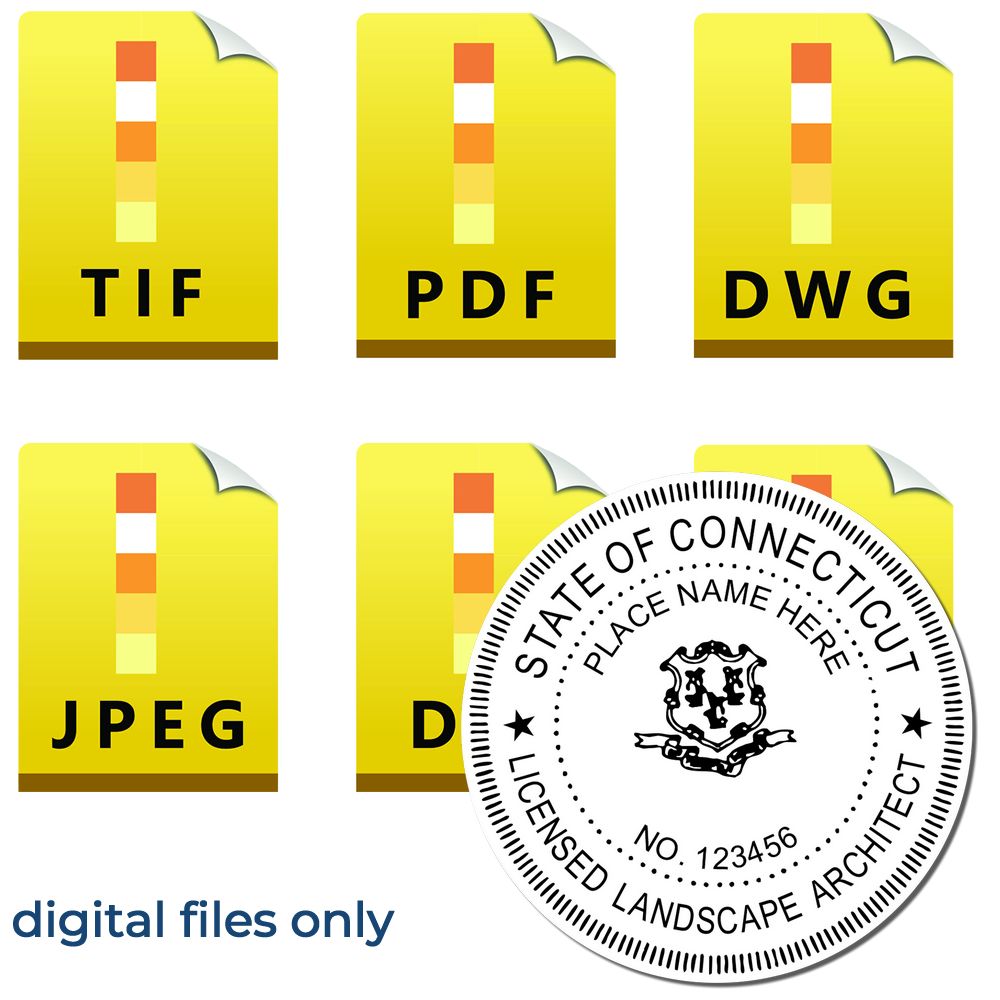
 Digital Connecticut Landscape Architect Stamp, 6 File Types3008LA-CTSale price$20.00 Regular price$25.00Save 15%
Digital Connecticut Landscape Architect Stamp, 6 File Types3008LA-CTSale price$20.00 Regular price$25.00Save 15%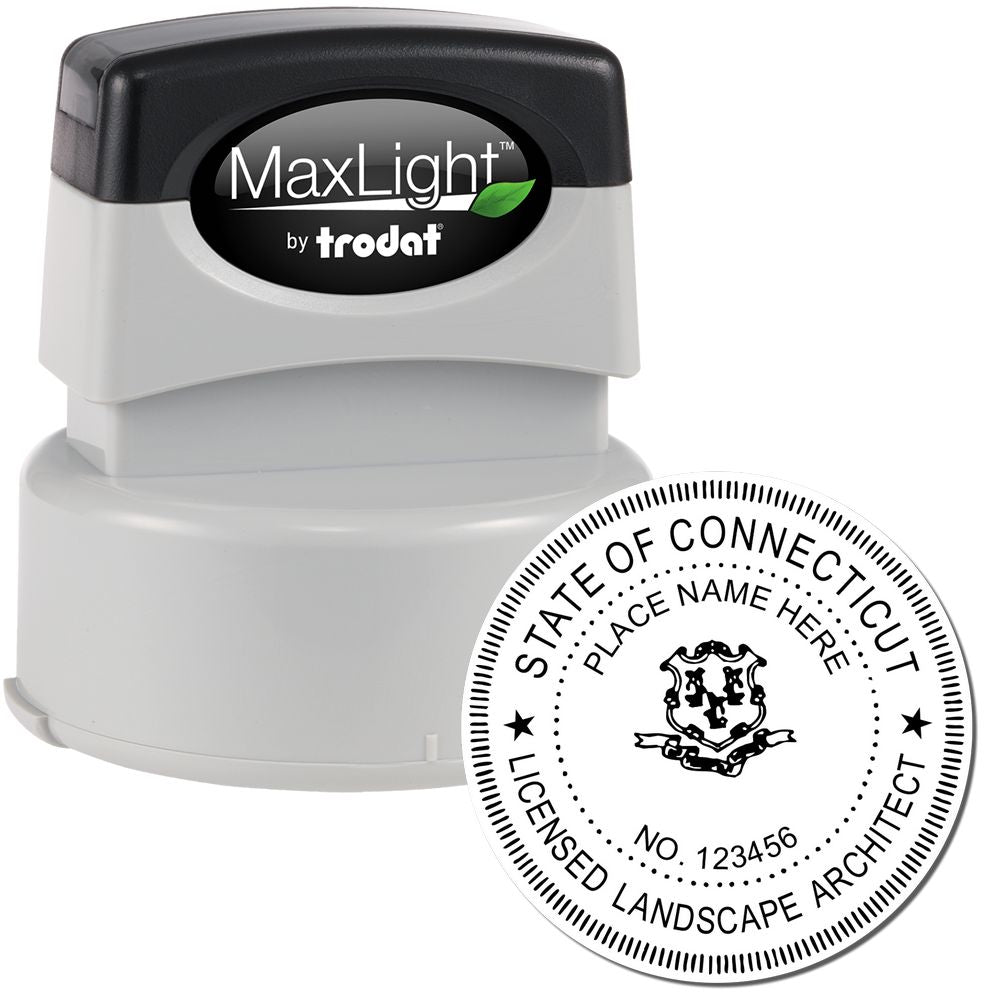
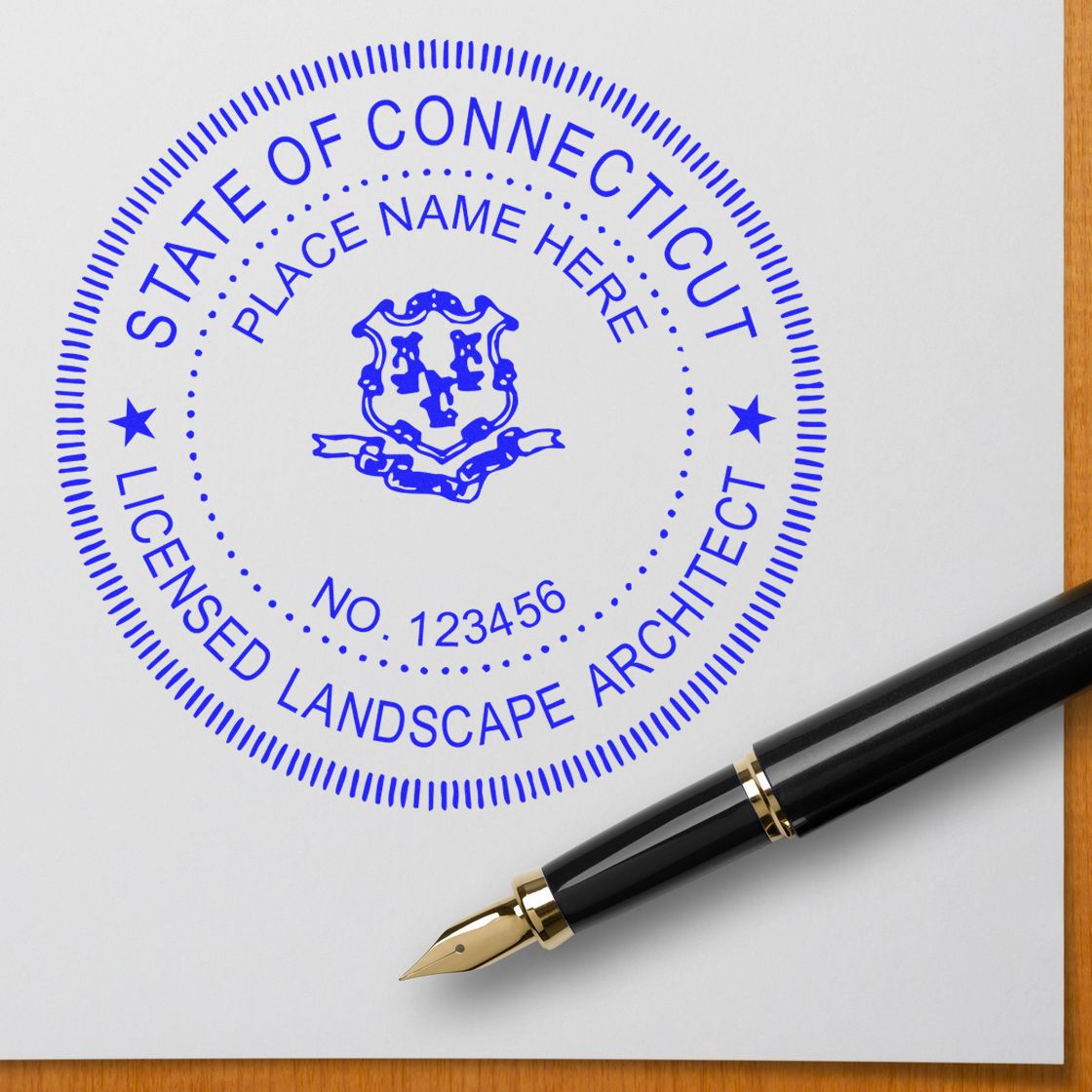 Premium MaxLight Pre-Inked Connecticut Landscape Architectural Stamp3021LA-CTSale price$46.95 Regular price$54.95
Premium MaxLight Pre-Inked Connecticut Landscape Architectural Stamp3021LA-CTSale price$46.95 Regular price$54.95 -
ARE Scores: Provide official documentation of your Architect Registration Examination (ARE) scores, showing successful completion of all required sections.
-
Application Fee: Pay the required application fee, which covers the processing and evaluation of your application.
Once you have gathered all the necessary documentation, submit your application along with the supporting materials to the Connecticut Department of Consumer Protection. The department will review your application and determine your eligibility for an architect seal.
It's important to note that architect seals in Connecticut have an expiration date. Architects must renew their architect seal periodically to maintain its validity. For more information on the renewal process, visit our article on Connecticut architect stamp expiration.
By following the proper steps and submitting the required documentation, architects can obtain their architect seal in Connecticut, allowing them to practice their profession with the necessary authority and legitimacy.
Ensuring Compliance with Architectural Regulations
To maintain architectural legitimacy in Connecticut, it is vital for architects to stay informed about state regulations and adhere to professional standards. This section will guide you through these essential aspects of ensuring compliance in the architectural field.
Keeping Up with State Regulations
Connecticut has specific regulations in place that architects must follow to practice within the state. These regulations cover various aspects, including education, experience, and licensure. It is crucial for architects to familiarize themselves with the Connecticut architect seal requirements and architect stamp laws to ensure compliance.
Regularly reviewing the Connecticut architect stamp laws helps architects understand the legal obligations associated with using an architect seal. These laws outline the requirements for using an architect seal, including the information that must be included on the seal and the circumstances in which it must be affixed to architectural documents. Staying up to date with these regulations helps architects avoid legal issues and maintain their professional standing.
For more detailed information on Connecticut architect stamps and their specific requirements, you can refer to our article on Connecticut architect stamps.
Maintaining Professional Standards
Architects in Connecticut are expected to uphold high professional standards to ensure the integrity and safety of architectural projects. To meet these standards, architects must continuously develop their skills, stay updated on industry trends, and engage in professional development opportunities.
Participating in relevant workshops, seminars, and conferences helps architects stay current with the latest advancements in architecture. These events provide valuable networking opportunities and allow architects to exchange knowledge with their peers. Additionally, joining professional organizations, such as the American Institute of Architects (AIA), can provide architects with access to resources, educational programs, and a supportive community.
By maintaining professional standards, architects demonstrate their commitment to excellence in their field and enhance their credibility. It is essential to be aware of any changes or updates to the professional requirements and guidelines set by relevant architectural associations.
To ensure that your architect seal remains valid, it's important to keep track of its expiration date. Knowing when your architect stamp needs to be renewed is crucial to avoid any disruptions in your architectural practice. Our article on Connecticut architect stamp expiration provides further details on this topic.
By staying informed about Connecticut's architectural regulations and upholding professional standards, architects can ensure compliance, maintain their credibility, and contribute to the integrity of the architectural profession in the state.
Conclusion
In Connecticut, architect seals play a vital role in ensuring the legitimacy and professionalism of architectural work. These seals serve as a symbol of authenticity and compliance with the state's regulations. By understanding the importance of architect seals and the legal requirements associated with them, architects can secure their architectural legitimacy in Connecticut.


Architect seals in Connecticut serve several purposes. They provide verification that the architectural plans, drawings, and specifications have been prepared by a licensed architect. These seals also indicate that the architect is responsible for the design and adherence to all applicable building codes and regulations. By affixing an architect seal to their work, architects demonstrate their commitment to upholding professional standards and ensuring the safety and welfare of the public.
Using an architect seal in Connecticut comes with numerous benefits. It enhances the credibility and reputation of the architect, instilling confidence in clients, contractors, and regulatory authorities. Architect seals also help to differentiate between licensed professionals and those who may not have the necessary qualifications. By clearly identifying themselves as licensed architects, professionals can build trust and establish their expertise in the industry.
To obtain an architect seal in Connecticut, architects must follow a specific set of steps and complete the required documentation. The application process typically includes submitting an application form, providing proof of licensure, and paying the necessary fees. By adhering to the application process and ensuring all documentation is complete, architects can obtain their architect seal and legally practice their profession within the state.
It is essential for architects to stay updated with the state regulations regarding architect seals in Connecticut. This includes being aware of any changes, renewing the architect seal as required, and maintaining compliance with professional standards. By staying informed and up to date, architects can ensure that they are operating within the legal framework and maintaining their professional standing.
In conclusion, architect seals are a crucial aspect of securing architectural legitimacy in Connecticut. By understanding the role and legal requirements of architect seals, architects can demonstrate their professionalism, comply with state regulations, and build trust with clients and stakeholders. By obtaining and utilizing architect seals responsibly, architects can showcase their expertise and contribute to the architectural landscape of Connecticut.
About ESS
Engineer Seal Stamps, also known as ESS, is a leading provider of high-quality custom rubber stamps, professional seals, and notary stamps. With a commitment to excellence in both product and service, we take great pride in offering a state board guarantee on all of our products. Our top-of-the-line engineer seal stamps and professional seals are perfect for architects, engineers, and anyone else in need of reliable and accurate stamping solutions.
At ESS, we understand that time is valuable. That's why we offer a quick turnaround on all of our products, ensuring that you receive your order in a timely and efficient manner. We believe that customer satisfaction is the foundation of any successful business, which is why we strive to provide stellar customer service to all of our clients. From the moment you place your order, our knowledgeable and friendly staff will work closely with you to ensure that your needs are met in every way possible.
In addition to our commitment to quality products and exceptional customer service, ESS also strives to be an environmentally conscious company. We make every effort to reduce our environmental impact by using sustainable and eco-friendly materials in our stamp production process. At ESS, we are dedicated to providing our customers with the highest quality stamping solutions. With our commitment to excellence, state board guarantee, quick turnaround, and environmentally conscious practices, you can trust that you are receiving the best products and service available.

